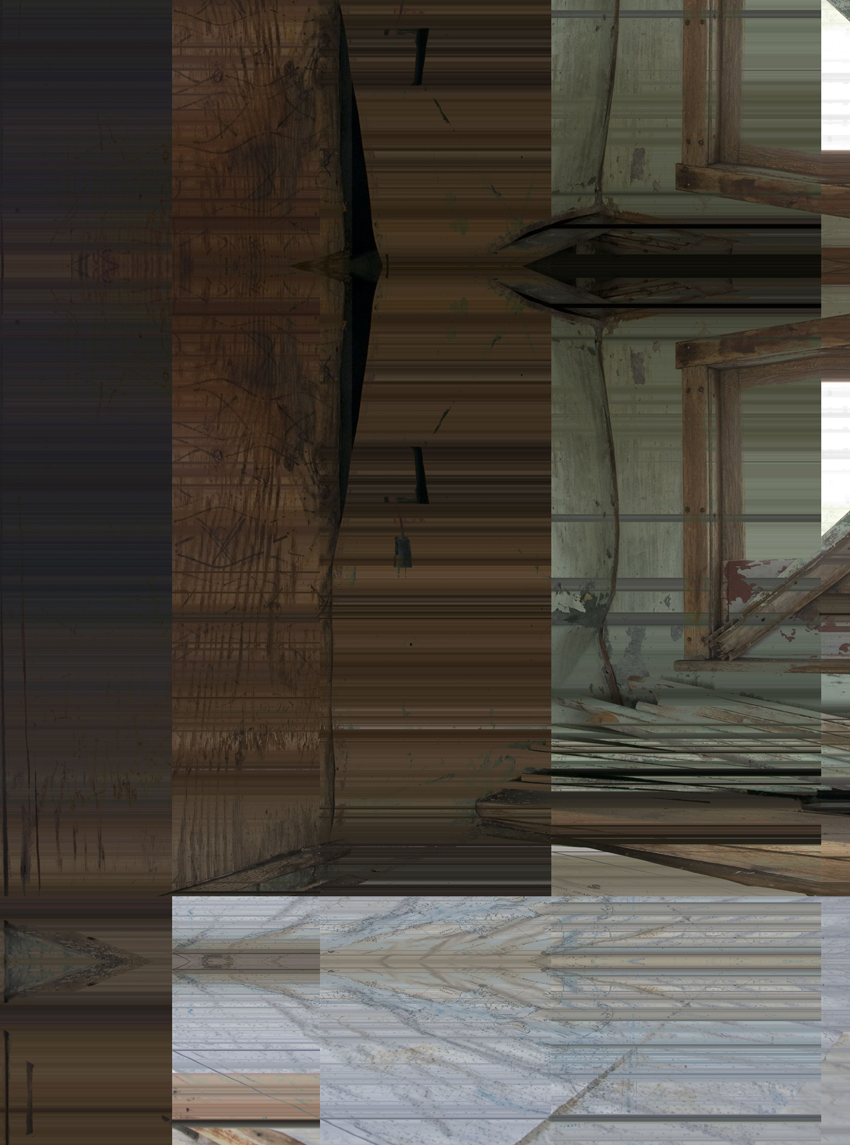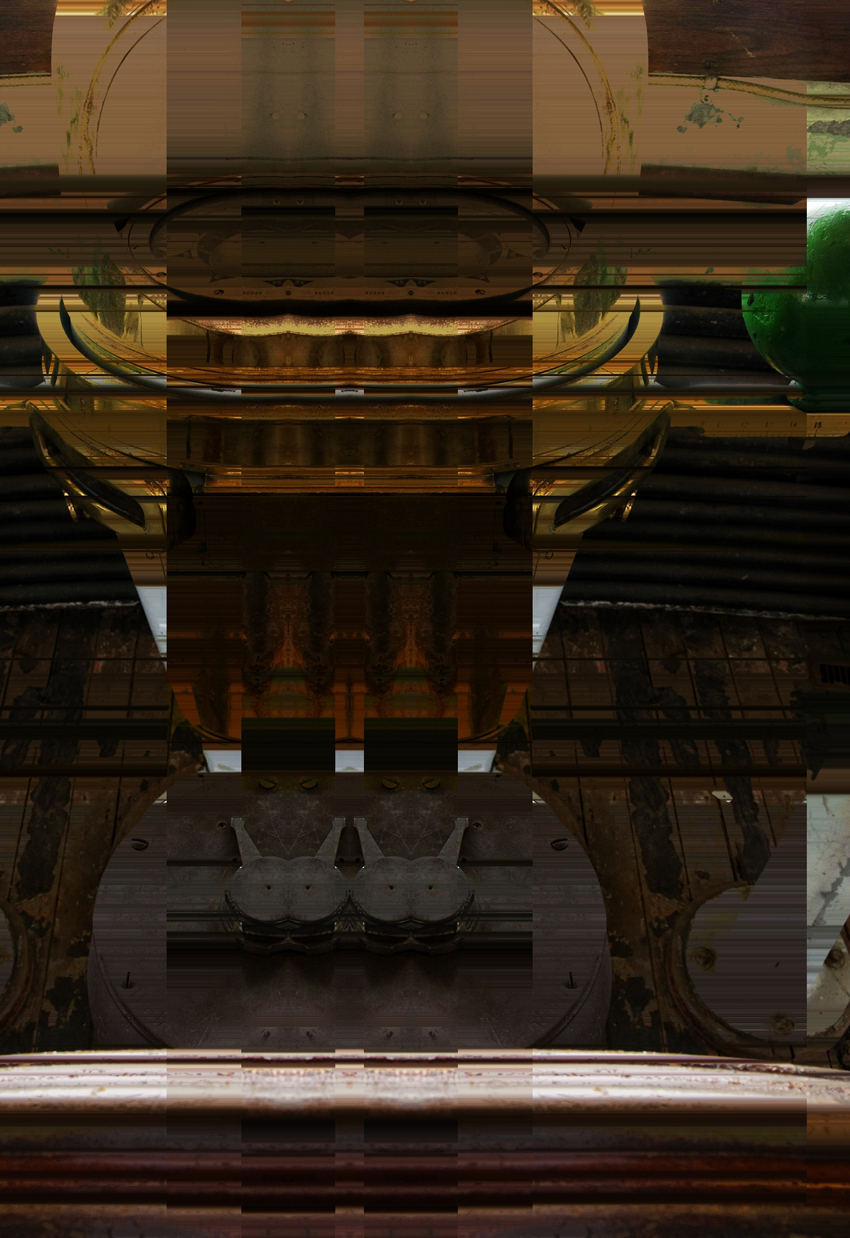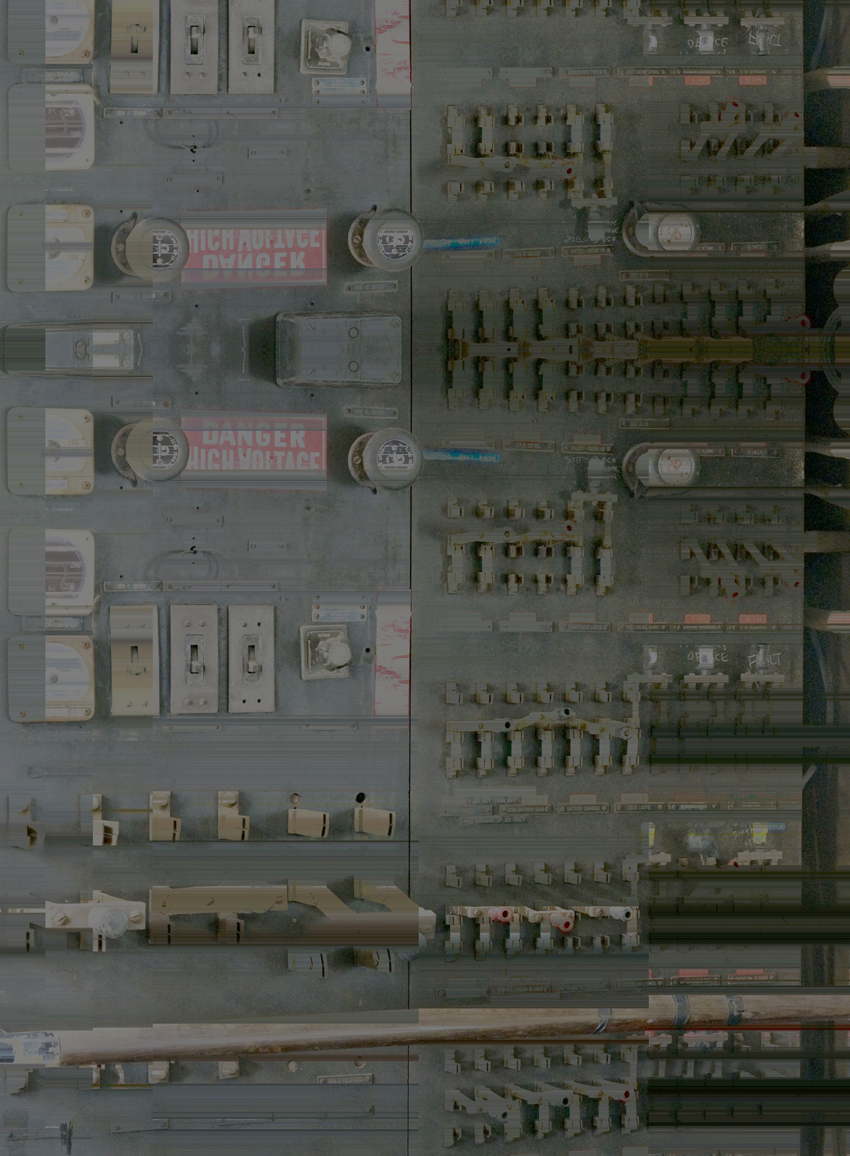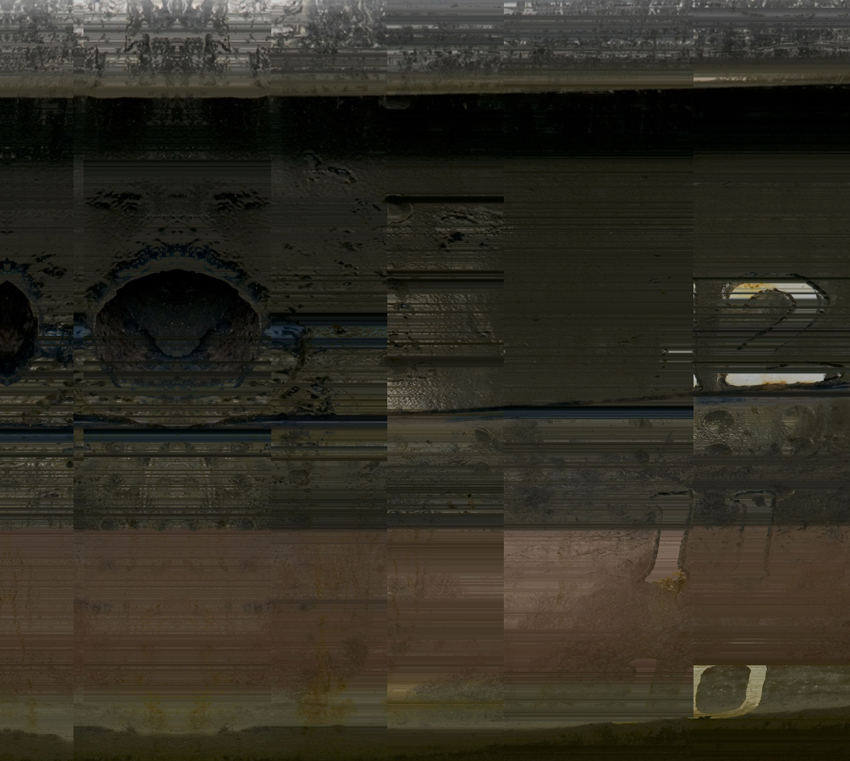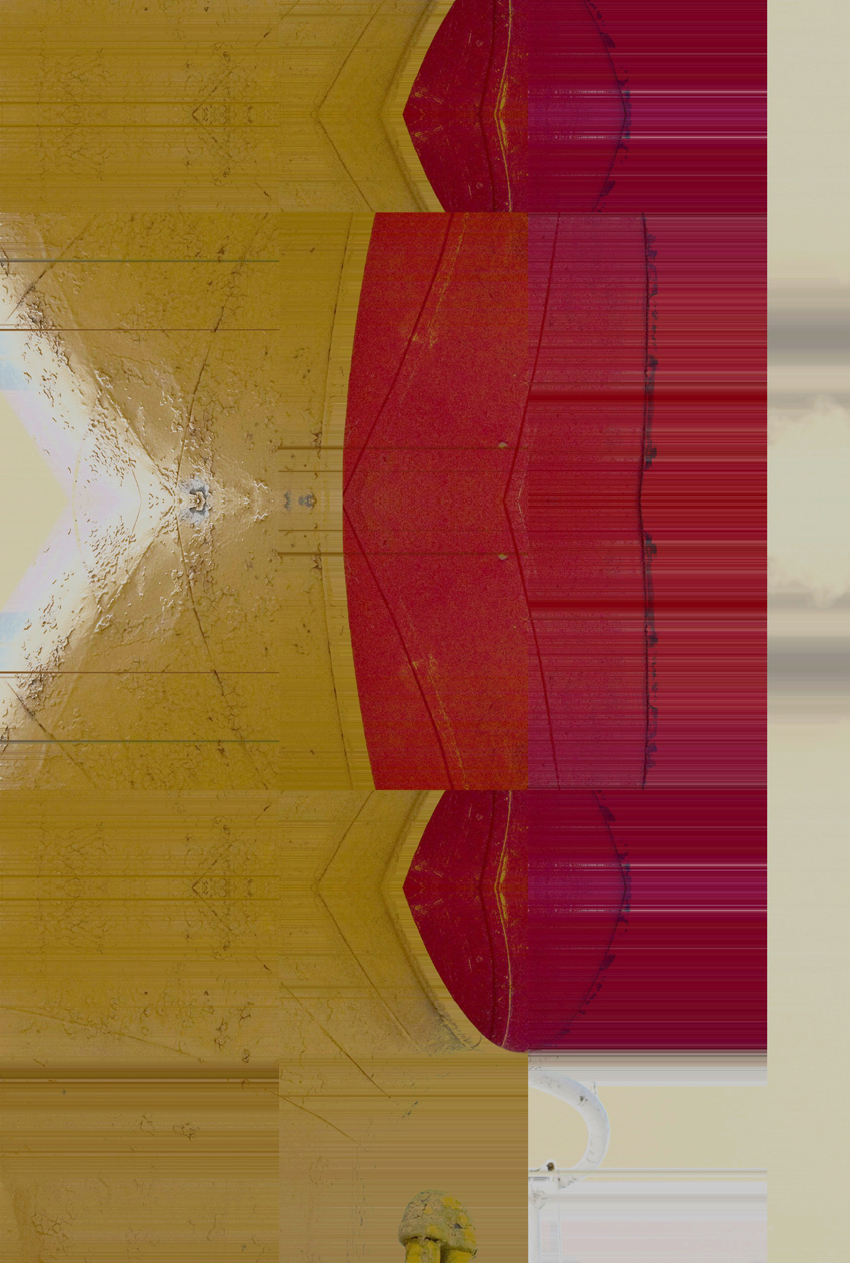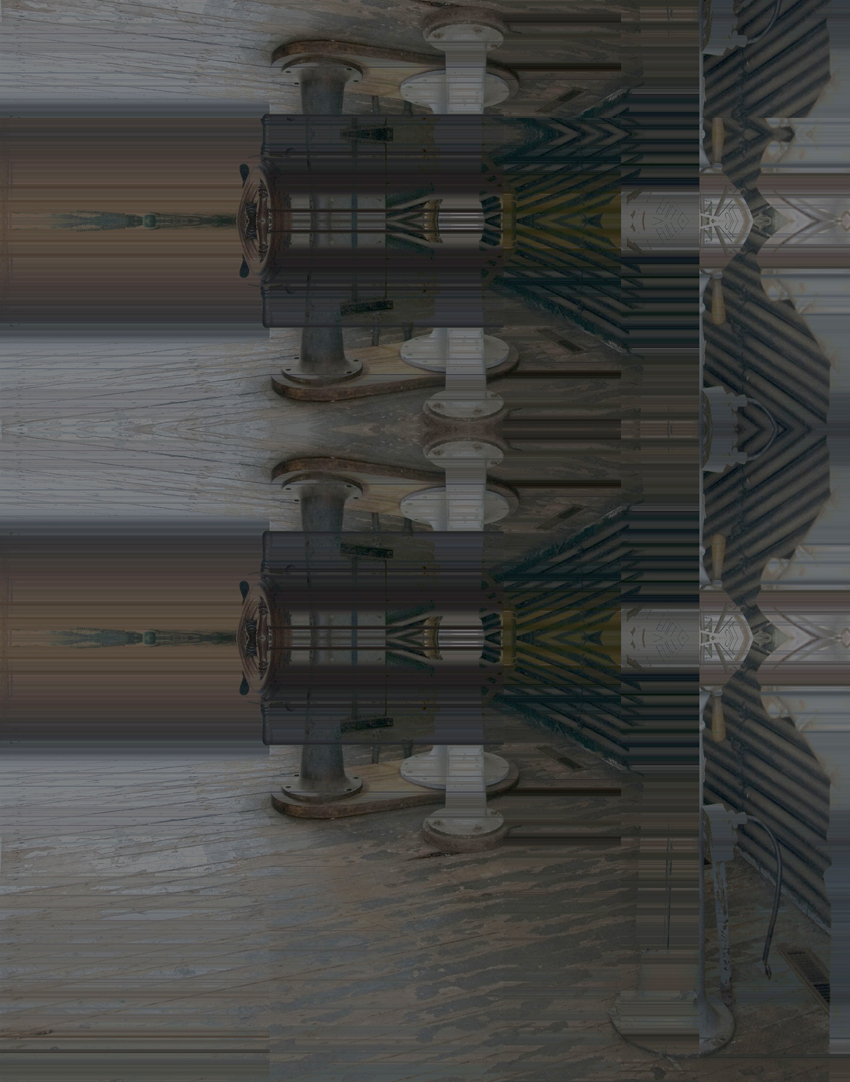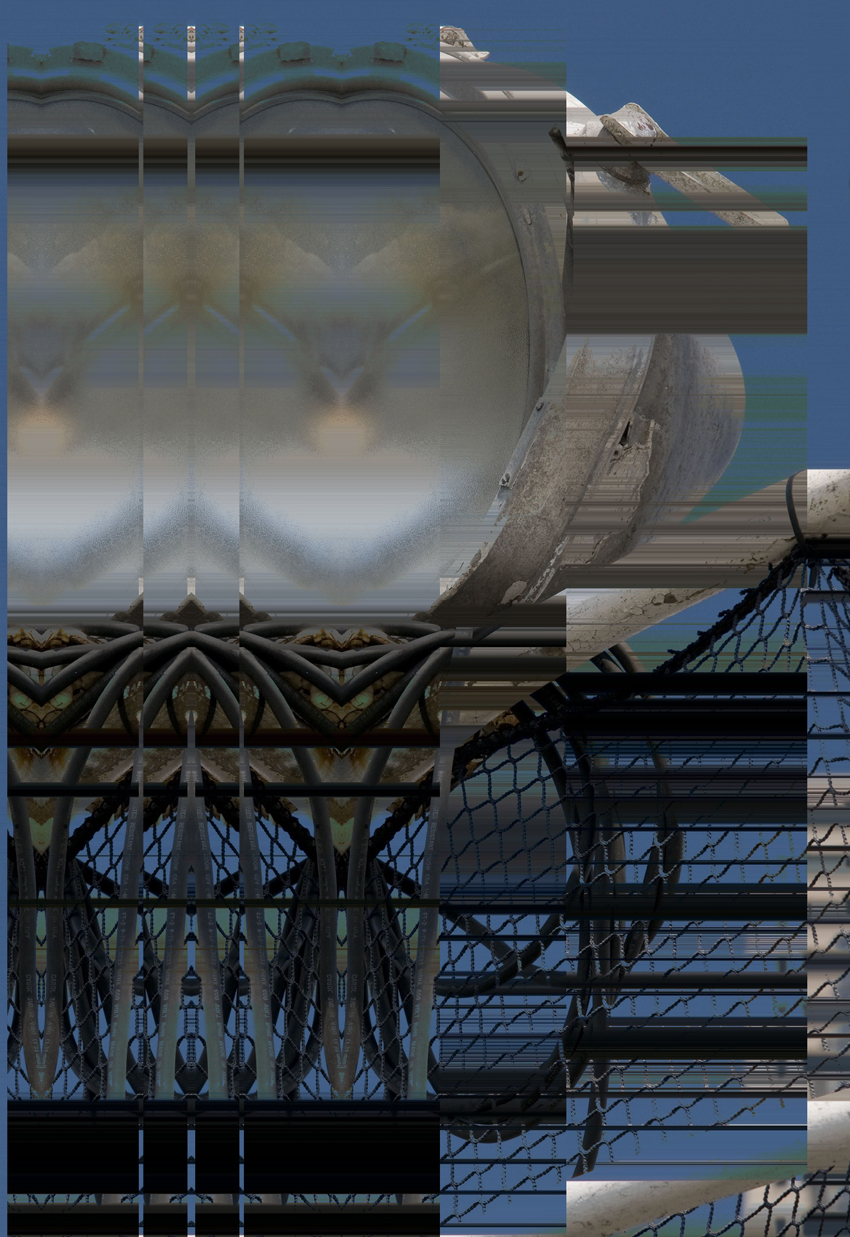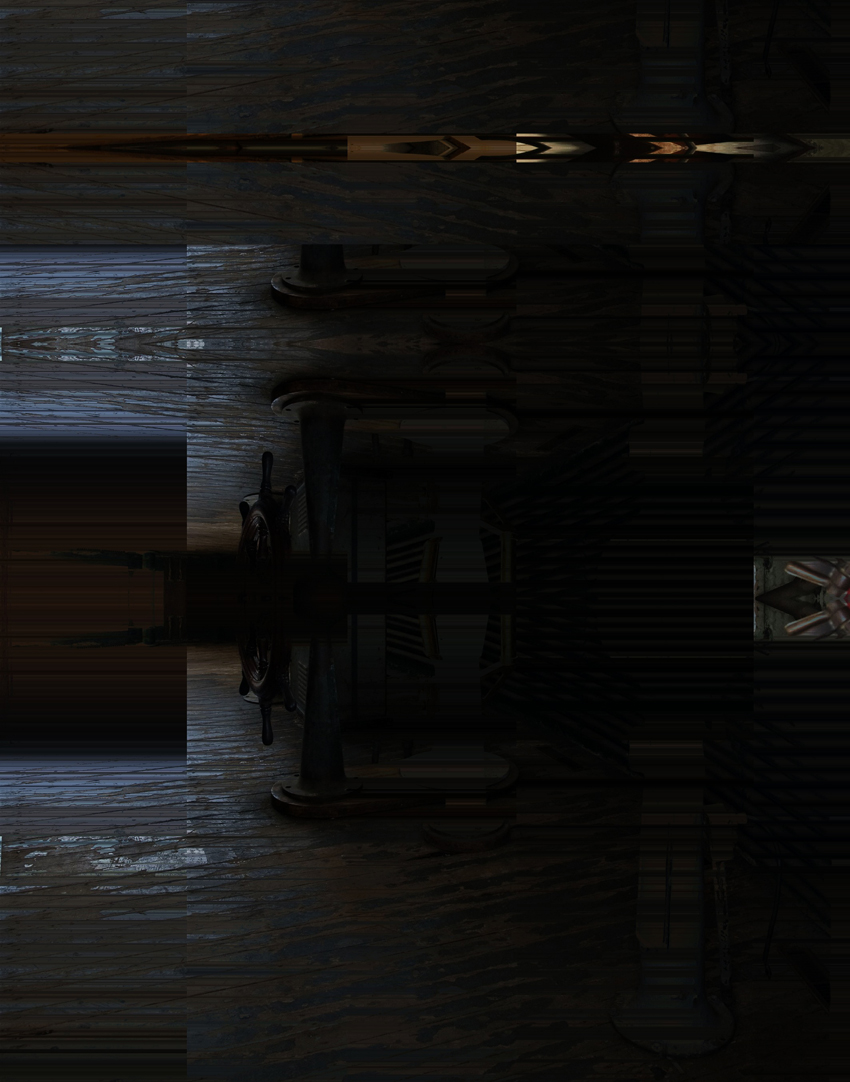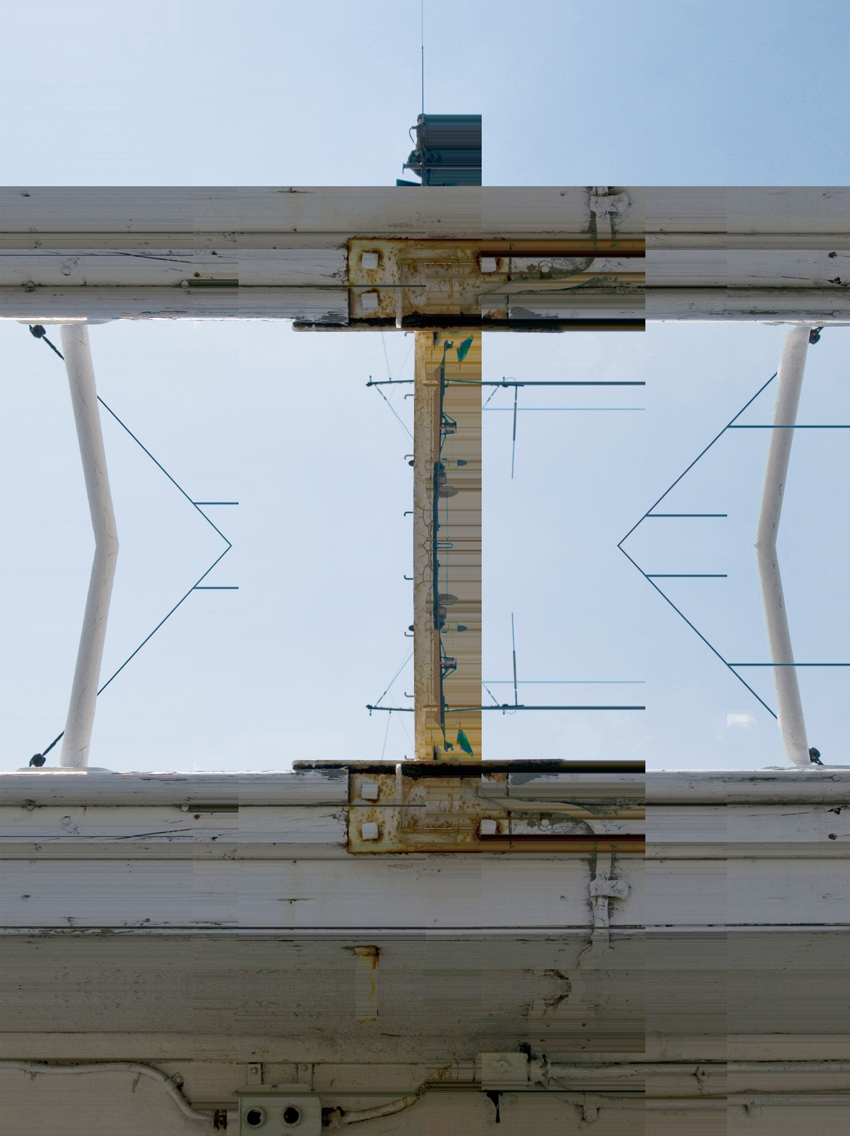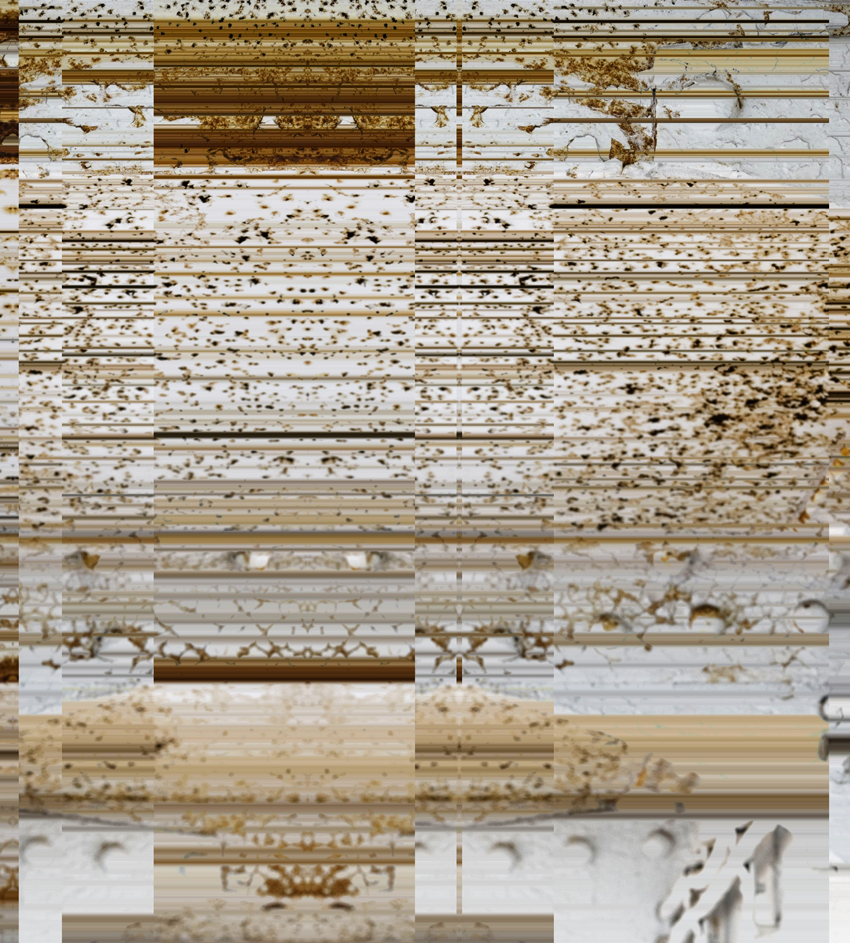02 05
02 05
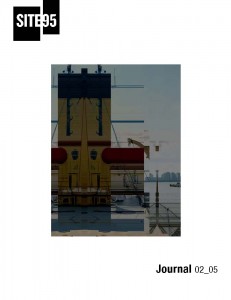
Journal Volume 02 Issue 05
DOWNLOAD PDF:site95_Journal_02_05.e
Editor in Chief Meaghan Kent, Contributing Editor Janet Kim, Contributing Editor Pooja Kakar, Copy Editor Beth Maycumber, Copy Editor Jennifer Soosaar, Copy Editor Kati Henderson
Curated by Meaghan Kent
Interviews by POOJA KAKAR and edited by KATI HENDERSON
All photos are credit: Cary Whittier
Contributors: Peter Brock, Maureen Cavanaugh, Naomi Clark / Fort Makers, Myeongsoo Kim, Jordan Rathus, Colette Robbins, Chad Stayrook, Molly Surno, Naama Tsabar, Byron Westbrook, and an Artist Project by Cary Whittier.
Journal designed by SITE, Logo designed by Fulano
Interview with Peter Brock
Pooja Kakar: What are you planning to present for “DiA on the LILAC”?
Peter Brock: I plan to hang a single piece from an ongoing series entitled “water paintings.” In this photograph, a gently curving brushstroke of water bisects a diagonal shadow. This event occurs on an off-white interior wall, with morning light raking in from the side. The angle of the light accentuates the spongy dimpling of the paint as it was rolled onto sheetrock. Two beads of water hang precariously at the end of the stroke, threatening to disrupt the calm gesture.
PK: How are you planning on utilizing the unique space on the LILAC to showcase your work/create an experience for the viewer?
PB: The constituent parts of this work (water, paint, wall, sun, shadow) exist onboard the LILAC. By placing this work in the officer’s cabin, I hope to draw attention to the shadows in the room. How will the angle of light change the texture of the wall? The enamel paint on the steel walls has resilient sheen, but still reveals subtle undulations of the surface. The water below the LILAC offers buoyancy but threatens to erode the steel structure should the paint fail. I once spent grueling hours chiseling away blisters of rust on the deck of a tugboat, each one the result of a failure in the protective film. I have come to think of paint as a transformative film, including the stains of water on porous surfaces that comprise the “water paintings.” I am curious to see how this transformation fares amidst the painted surfaces of the LILAC. What is the consequence of the failure to transform a surface? Is this a durable transformation?
PK: Some of your recent works includes water and/or pigment on concrete; can you describe the process behind this and how and why you choose your materials? Could you explain your process—from the inception of an idea to its execution in an exhibit, in greater detail?
PB: My process is rooted in day-to-day looking. By this I mean paying close attention to the surfaces of my environment, which is New York most of the year. I come to these surfaces with a background in painting and an inclination to see pictorial depth. Recently I have been experimenting with making painterly marks on urban surfaces using a brush and water. I photograph the process and consider the types of language and transformation that occur. I am excited by the spatial fluctuation that happens when water activates the speckled tones of the sidewalk. The grains of sand and gravel aggregate appear vibrant. These interventions evoke a basic metaphor of painterly space and yet maintain their identity as mundane material.
PK: Can you elaborate on the process and development of making public art projects? The Williamsburg Bridge for instance seemed like a unique collaboration.
PB: The Williamsburg Bridge project involved several collaborators and close to three months of planning. When I moved to New York, I missed seeing the horizon. When I walked over the Williamsburg Bridge for the first time, I became enamored with the vantage point it offered on the city. My installation of colored ovals on the bridge was intended to enliven the space and draw attention to horizon. Although we had no permission or support from the city, the piece has been up for over two years.
PK: What projects are you currently working on?
PB: I am continuing to investigate the minimal transformation of porous surfaces with water, vegetable oil and graphite. I recently spent some time examining how liquid graphite changes the bark of a tree into a rhythmic and textured monochrome. I am also working with video to explore the fleeting quality of these painted water shapes. The heat of the sun works against my desire to articulate a solid shape with clean edges. While photographs provide a sense of satisfaction and accomplishment, the video pieces involve a Sisyphean defeat of form.
Interview with Maureen Cavanaugh
Pooja Kakar: What are you planning to present for “DiA on the LILAC”?
Maureen Cavanaugh: I plan on creating a comfortable space where the work is the bed as well as my paintings installed in each bunk. The idea is that this is someone’s small space and contains what they chose to share and keep close to themselves.
PK: How are you planning on utilizing the unique space on the LILAC to showcase your work/create an experience for the viewer?
MC: Since the room I have is a sleeping cabin I am going to work with it as a domestic space. I am planning on sewing together fabrics to make a slipcovers on tri-foldout foam cushions. They will be layed flat on the bunk beds so visitors can sit and lie down on them, but when they are folded they will function more as an object. The walls are magnetic so I am planning on installing paintings and drawings with magnets that I will also paint, draw and collage on. The paintings and drawings with focus around water and created mementos. I am also trying to learn how to make knots.
PK: Could you explain your process—from the inception of an idea to its execution in an exhibit, in greater detail?
MC: I have visited the ship a few times, learning a bit about the LILAC and its function as a lighthouse tender, and since then I have been working around what can be created there. I have worked with water themes before so it is a nice fit for my paintings.
PK: How similar or different will this be to your previous exhibitions?
MC: This is the most site-specific project I have done. The space is definitely informing my process, but it feels very familiar. Living in funny apartments in Brooklyn, I have taken to decorating the spaces as an extension of my art work. My studio is in my home so everything is connected, and my paintings often deal with interior themes.
PK: What projects are you currently working on?
MC: Later this summer I will begin working on a small edition artist book.
PK: Who would you say you have been influenced by?
MC: For this project I have been looking at a lot of textile books, in particular Louise Bourgeois Fabric works. Bourgeois work has helped me make the connection from my painting to collaging materials together. I have also been looking at bed projects that other artists have done, including Tracey Emin, Mike Kelley and Ai Weiwei.
Interview with Naomi Clark / Fort Makers
Pooja Kakar: What do you have in mind for “DiA” and how is it inspired by the LILAC?
Naomi Clark: I found it very interesting and romantic to think about a boat that goes out to service lighthouses, like mobile island. I also responded to the many built-in loops and hoops that a boat contains to function; I think they are for ropes. So I wanted to use the idea to build something on the boat like an additional service center within this service center. That said, I want to use some of the existing appendages to build a colorful, abstract, tipi-like structure. I want the tipi to pop out in color and form from the the LILAC.
PK: How are you planning on utilizing the unique space on the LILAC to showcase your work/create an experience for the viewer?
NC: I want bright warm colors and geometric shapes to stand out from the ocean-like palette and organic shapes of the boat. I also want to work with the existing hardware that is built into the boat and the flat narrow service of the deck to build something high and long and waterproof.
PK: Given that a lot of your work has been shown in outdoor installations, how will the environment come into play with your project for DiA?
NC: I love that the work will be set off by the water in the background. I think working in this way, the environment is always part of the work. The documentation and the photographs serve as final compositions that include the work and the environment.
PK: Could you explain your process—from the inception of an idea to its execution in an exhibit, in greater detail?
NC: At Fort Makers we have many different projects going on at once. When we are working on a new project it will be informed by all the other installations and objects that we are working on the moment. Usually when we are doing a site-specific installation we will go see the space and then think of materials that would work to build some sort of structure. We also have a lot of brainstorming and discussion about the form that each project could take. I would say that conversation is very important in our process. Everybody adds to the idea and the form emerges from this work.
PK: Can you explain what Fort Makers is and the mission of the organization? How does the collaborative process work?
NC: Fort Makers is a project-based artist collaborative that creates useful art objects as well as large-scale installations. The process is very dynamic and fluid. There is a lot of conversation, examination of related projects, and a lot of inspiration taken from experimentation and action that happens at the studio. Ideas form from joint experience and conversation.
PK: You have described your artwork as a reconstructive process, a way of using a traditionally two-dimensional medium in a three-dimensional way, perhaps you elaborate on what lead you to this process and why?
NC: I have always had an interest in sewing and textiles as well as painting. Painting, to me, always seemed like an extension of fabric because, well, it is. It moves like fabric and can take 3D form very easily when it covers something or is stretched. I also find it very comforting to know that if something does not work one way, I can re-form the object and have it function in another way. The deconstruction and reconstruction is a way to free myself from attachment to the material piece and the object. I want the work to be present in the moment. I think it is a way to change and work with perspective.
PK: What projects are you currently working on?
NC: We are getting ready for our first solo gallery show, which will take place in July. It will be a large-scale, multi-faceted project in which I will paint fabric in the gallery and then we will all map, draw and choose strategic locations around Richmond, VA where we will set up various installations. We are also gearing up for our stage set for MoMA PS1’s Warm Up concert in August and the DUMBO Arts Festival in September. We have an ongoing installation at Pier 17 entitled “Free Space” that is open to the public from Tuesday to Sunday 11am-7pm until Labor Day.
Interview with Myeongsoo Kim
Pooja Kakar: What do you have in mind for “DiA on the LILAC”?
Myeongsoo Kim: Well, I have lots of things in my mind, but for some reason, they are pretty hard to say. And probably that is because I don’t know what exactly I am thinking. It is always hard to figure out what I have in mind, especially when I have to say it to someone.
PK: How are you planning on utilizing the unique space on the LILAC to showcase your work/create an experience for the viewer?
MK: This is an exciting opportunity for me since I have never done any kind of site-specific project. And that is even more so why I am having hard time figuring out what I have in mind. Most of my work I have created in a very spontaneous way. I don’t usually make work with any specific objective. I call myself a great collector of many things, but I am a collector not because I love to collect things. I am a collector because I can’t throw stuff away.
PK: Could you explain your process—from the inception of an idea to its execution in an exhibit, in greater detail?
MK: My process in creating work is very similar to the way I have become a collector. I notice something around me and give it recognition. It is sort of like picking an apple at the farm, but rather than picking up an actual apple, I notice other things around me, such as dried leaves for my book, a wildflower for my girlfriend, abandoned beehives for leftover honey, saving an earth worm from the deadly direness of Fall, a broken tree branch for a silly swing, and maybe a little beetle for playing with. So, in the end, I’d perhaps call my work ‘picking an apple at a beautiful farm,’ but I’d use all of those things in that work, not an actual apple.
PK: Your recent projects appear as kind of oblique portraits (“The fortune tellers house” and “Carlos”) what was your objective behind these pieces? They also have some similar elements, what was the process in culling objects for each project?
MK: When I had a dream about my good friend Carlos, I made a piece about that dream. The dream wasn’t something special. It was just a strange dream, like any other dream I might have any night, but something kept dragging my ankle the next day and the next day. Then suddenly, Amazon suggested for me to watch a movie called “Carlos” (it is about a notorious terrorist in 60’s, often called ‘the Jackal’). This coincidence may sound too easy or simple to be considered an art making process, but that coincidence had become too big to ignore when I read an article in The New York Times about the actual “Carlos” a couple days after. He was serving a life sentence in France, and was now being transferred to Paris for another trial. I said “the actual Carlos.” I said it to make a clear distinction between my Carlos and the other Carlos, and I think my piece “Carlos” started from that point when I tried to make that distinction between realization and recognition.
PK: Each installation piece appears to be meticulous and deliberate in nature, what kind of planning is involved to achieve that aesthetic?
MK: I am hoping that producing work could be a joyful thing. I could work on many different things for money, but when I do that I always end up hating it, whatever that is. However, achieving a certain aesthetic has been a purely joyful thing to me. When I don’t think about any objective, I feel free, and it makes me go deeper and further until I get satisfaction.
PK: Where have/do you find inspiration for your work?
MK: I have too many inspirations in my life, so it is extremely hard to pick. However, if I have to mention one, I love islands. Currently I am in love with St. Helena in the South Atlantic Ocean. I spend every hour looking at it on Google Earth before I go to bed.
PK: What are you currently working on?
MK: I am currently working on the piece for “Dead in August.”
PK: There seems to be an element of humor with your pieces, how does this come into play with larger themes in your work?
MK: That is because I find myself to be funny sometimes and maybe so does my work.
Artist Project: Cary Whittier
Interview with Jordan Rathus
Pooja Kakar: You have a film background, what motivated you to transition into fine art and how does that background influence your work?
Jordan Rathus: My video and film work has always been experimental. I think it’s more the context in which it’s presented that’s changed. I felt ultimately that the best place for my work to grow would be in the “world” with the fewest rules. That, for me, was the art world. But having this extensive film and television experience has been a tremendous inspiration for me. A lot of the work I make self-consciously exposes the multiple layers of the production process, from performing to directing to camera operating to audio recording to editing. My emphasis on “behind-the-scenes” often surpasses the screen time devoted to the content of the piece.
PK: This work will be presented for the first time on the LILAC how does the piece relate to the site?
JR: “Based on, If Any” sets out as a sort of anthropological documentary focusing on the political history and environmental impact of the Panama Canal. For me, the LILAC’s own rich history along with the unifying element of water offers an interesting connection.
PK: Could you explain your process—from the inception of an idea to its execution in an exhibit, in greater detail?
JR: More and more my process has become centered on capturing the hysteria of developing and performing on-camera personas. I often begin by focusing on a particular character trait, and then I center the video’s narrative around the study and exploration of the resulting behaviors. In “Based on, If Any” I reveal the main character’s constant struggle to create an illusion of professionalism. I edit all of the behind-the-scenes footage into the completed scenes, creating a confused power struggle between myself as the on-camera performer and myself as the editor. I consider a piece complete when the journey of finding this balance of power is either perfected or exhausted.
PK: How does your use of pop culture communicate meaning in your work?
JR: I try to use culturally recognizable modes of visual storytelling in order to create a shortcut for the viewer. I feel that from this point of comfort and familiarity I am able to more effectively communicate the deconstruction of these modes, and I can more successfully reveal what is not typically revealed.
PK: Who/Where have you found inspiration from for your previous pieces?
JR: I’m inspired by a wide range of cultural sources, from reality shows like “The Bachelor” to operas by Puccini to films by the Marx Brothers.
PK: What projects are you currently working on?
JR: I’m continuing on this trajectory of recontextualizing the travelogue film format as I journey through places like Panama, Cuba, and the Arctic Circle. Another project I’m excited about is a film I’m making with Nick Paparone. We’re shooting here in New York over the summer and the premiere will be in November.
Interview with Colette Robbins
Pooja Kakar: What are you planning to present for “DiA on the LILAC”? How are you planning on utilizing the unique space on the LILAC to showcase your work and create an experience for the viewer?
Colette Robbins: The portholes in one of the LILAC’s cabins were my starting point for this project. The cabin I chose is overlooking the Hudson river. I have created black and white digital collages that I am printing onto a transparent vinyl. These vinyls will be attached to the outside of the portholes. The imagery in the collages comes from my current body of work ‘Archaeological Fiction’ and contains different double-headed monolithic structures on remote sea-worn islands. I wanted to have my imaginary archaeological structures superimposed on an actual body of water. The imagery I create has no particular time frame, and looks like it could either be from some historic site or from a sci-fi film. I am curious to see how my monolithic structures appear when paired with the Hudson river and the New Jersey shore line. I also wonder about what kinds of shadows will end up resulting from these vinyls inside the cabin.
PK: Could you explain your process—from the inception of an idea to its execution in an exhibit, in greater detail? Could you go into detail explaining the meaning of the subject matter, particularly the Monoliths?
CR: I am always researching new imagery to use in my projects, whether on the internet or when traveling. I am inspired by everything from Ridley Scott’s current film “Prometheus” to the Roman god Janus. I have created quite an archive of images which I draw from while creating my digital collages. All of the monoliths are created with the idea that they are a monument to a fictitious relationship. I think a lot about how there are always monuments to individuals but rarely are there monuments to relationships. Relationships between two people throughout history have made as big of impact on our culture as individuals. I choose to place these monuments in remote seascapes because I like the idea of someone stumbling upon the monument in the middle of nowhere. I also think about how you would be able to interact with the monuments. A bunch of my current monuments have places where the viewer could sit inside the two heads.
PK: What led you to using the medium of graphite in your work?
CR: I usually use the digital collages as a jumping off point for creating labor-intensive graphite paintings. Graphite is something I have been using my whole life, since I could pick up a pencil. It is a very immediate material that can create a number of textures. I use it in the powder form and mix it with water in order to get an almost velvety quality to the surface. For the subject matter, I like using a black and white palette, because it strips down any meaning colors would superimpose on the works. I think I decided to use graphite for the majority of my work because I finally found a way to fuse my love of drawing and painting by using the painting technique with the graphite powder.
PK: How do you think the way your works are displayed will contribute to the overall experience on the LILAC?
CR: Since my works will be interacting directly with the structures of the portholes in the cabin, they will be starting a direct conversation with the space and with the viewers who interact with the LILAC. The LILAC is a powerful space with or without art. Just being on a historic steam boat while in Manhattan feels like you have stepped back in time to another era. I want my installation of collages on the portholes to add to that feeling, not subtract from it.
PK: Are there any previous exhibitions you’ve had that you think will be similar to “DiA,” if yes how so?
CR: I have never made an installation on a boat like the LILAC. However, I have shown in alternative spaces in a nomadic curatorial project called Parlour. I love the idea of working outside of the typical gallery model and pushing my ideas to a new place because of it.
PK: What other projects are you currently working on?
CR: The porthole imagery is very important to my work currently, and I am making a series of small spherical graphite drawings that are going to be installed in an exhibition in LA in late July. I will also have some work in a show in upstate NY in August. This summer is going to be an opportunity for me to gather a lot more island inspiration since I will be in a residency in Norway in August on a small island outside of Bergen. I have never worked on a tiny island in the North Sea. I am excited to see how my work transforms because of that experience.
Interview with Chad Stayrook
Pooja Kakar: What are you planning to present for “DiA on the LILAC”?
Chad Stayrook: I will be presenting “A Siren Song (in three parts)”. This will be a performance and installation in the engine room of the LILAC, consisting of a large functional lighthouse installed to appear as though it is growing out of the engine room’s controls. This lighthouse will be positioned to shine its light at head level for those standing on the engine room’s mezzanine. On opening night there will be a performance involving three musicians who will play the role of Sirens, mythic creatures said to lure sailors into shipwreck by lulling them with their physical and musical beauty. Each musician will play two pieces in succession based on the rotation of the lighthouse light. The musicians involved are Ellena Phillips, Rowan (Shelley Burgon), and Unstoppable Death Machines (Michael and Billy Tucci).
PK: How are you planning on utilizing the unique space on the LILAC to showcase your work/create an experience for the viewer?
CS: My piece is conceived and built specifically for the LILAC. I intend for the installation to inhabit the engine room space as though it is actually part of the ship. This installation and its associated performative event pay homage to the history of the LILAC as a lighthouse tender and its duty to maintain navigational aides meant to keep other ships and their crew safe.
PK: Could you explain your process—from the inception of an idea to its execution in an exhibit, in greater detail?
CS: My work is often situational to the opportunity at hand. I am always working within the same lexicon, but ideas are usually conceived after seeing the environment they might be presented in. The first stage of any project is research. This could be researching concepts, historical events, persons of interest, exhibition sites, etc. The ideas for a piece are formed through this research. The next stage is experimentation. This involves working out what format will best present the ideas I’m interested in, and also how I want to present the research material (how much liberty I want to take with “fact”). The final stage is execution. This is a multi-part process that involves researching materials, coordinating with collaborators, officials, curators, building managers, etc., making the physical work, and designing and installing the final installation. Often, the majority of time in this stage is spent sketching building plans and getting permission from the powers-that-be to do something. Before I start physically making anything I have a very good idea of what I want it to be. The production of a piece usually happens really quickly. The same goes for the overall installation of the work in an exhibition setting.
PK: You’ve described your work as creating systems using ideas confirmed by, related to, or inspired by science, philosophy, and/or popular culture; can you elaborate on why you consider them as systems and how you facilitate a dialogue between these three areas in creating your work?
CS: I see the “system” as the multi-stage process I described above. This system draws ideas from those three areas and investigates how an idea is perceived through the lens of each. An “idea” often takes on different meaning or purpose when put against the backdrop of science as opposed to philosophy as opposed to pop culture.
PK: There is an element of humor, particularly in the titles of your work (for instance, “The boys absurd invention” and “GPS memes”) how does this come into play with larger themes within your work?
CS: Humor is very important to me in my practice. My work is very much about investigating and understanding the world I live in (the human condition). I find humor to be a very useful tool for representing the humility (and futility) of that process.
PK: Can you describe your studio space and how the different disciplines create your environment?
CS: My studio is more of an incubator than a production facility. I use it as a space to research ideas and experiment with materials. Final pieces are often outsourced to printers, or built directly in the exhibition space.
PK: You often collaborate with performers, artists, and musicians; how does this outcome differ from your original vision?
CS: Actually, the collaborative work is more recent. In my individual practice I often work with others but their roles are very specifically defined. A musician is chosen because his or her work relates specifically to an idea I am working on. In this instance, it is less about engaging in a dialogue with this person to inform the direction of a piece than utilizing this person’s skills to realize my vision. In this working situation the outcome of a piece rarely differs from my original vision. I have, in recent years, formed specific collaborative projects: Bandwagon with Jose Ruiz and Really Large Numbers with Julia Oldham. These collaborations were formed based on similar interests and working processes, and the work produced is the result of a lot of dialogue. Final pieces are created with heavy input from both sides and may very well differ from where I initially imagined an idea might go.
PK: What projects are you currently working on?
CS: For the last year I have been working on a project called “An Adventure (in three parts).” “Part 1: The Journey” involved canoeing up the Hudson River from my studio in Brooklyn to Peekskill, NY under the auspices of finding the sublime through a solo adventure expedition. “Part 2: The Narration” involved retelling this journey from memory while getting tattooed with a piece I designed mapping the route I took up the Hudson. “Part 3: The Commemoration” will be a celebration one year after the initial journey.
In August, Really Large Numbers (a collaboration with Julia Oldham) will start a 5 month residency on Govenors Island through LMCC. We intend to study anomalies we find within the island’s history through the lens of our individual and collective practices.
I was recently in residence at I-Park in Connecticut where I built a series of installations across the 450-acre property that collectively turned the land into a ship. I produced a video of me navigating and exploring this ship, which I am currently editing.
I am working on a series of photos, video, and performances that document the launching and recovery of a model rocket.
I am co-directing an artist-run space with Jose Ruiz and Brian Balderston called Present Company. We present a busy schedule of exhibitions and performances throughout the year and will be involved in a couple art fairs this fall.
Interview with Molly Surno
Pooja Kakar: What are you planning to present for “DiA on the LILAC”?
Molly Surno: Channeling the masculine and crass tradition of sailor sexuality I will install a motion sensored sound piece. Each time a human body traverses the space of the corridor a barrage of whistles and cat calls will be activated. Despite age, gender, body type, the non-discriminatory sounds of men lusting for passerby’s will be vulnerable to this desire.
PK: How are you planning on utilizing the unique space on the LILAC to showcase your work/create an experience for the viewer?
MS: Taking a playful approach, I am interested in using the unique architecture to alarm the viewer. The boat is designed to inspire navigation and as people move through the space they will encounter my piece. It is not something the viewer looks for, rather the piece looks for the viewer.
PK: Could you explain your process—from the inception of an idea to its execution in an exhibit, in greater detail?
MS: A large part of the work of an artist comes from reading, conversation, and experience. A lot of my time in the studio consists of writing, staring out the window, and reading. My process is based on intuition. For me ideas hit like lightening and I rarely make tests. I try to conflate my life and work practices in order to achieve more electric moments where I translate my activities into formal questions. Bruce Nauman once said, “At this point art [has] become more of an activity and less of a product.” This clarifies my goals for my art process.
PK: Perhaps you can elaborate on your use of different methods of media including photography, video, performance, and sound and how it often describes feminine cultural experiences.
MS: While many of my works deal with the cultural and aesthetic realm of female rituals the work I am making for the LILAC specifically explores masculine desire and sexuality. I am using the medium of sound which is free from the same associations as image in order to provoke the humor and aggression around cat calling.
PK: Can you describe the process of how you realize your work within your studio space and artist residencies? What role does the physical space play?
MS: My work is almost entirely site specific. I construct an installation give the physical and architectural parameters given to me.
PK: You often collaborate with performers, artists, and musicians; how does this outcome differ from your original vision?
MS: When working with a time based medium like film, music, photography or performance you open yourself to the possibility of chance. This for me is the most dynamic part of art making which is also intrinsic to the process of collaborating. Relinquishing all control and allowing the work to move and navigate through time and space always differs from the original.
PK: What projects are you currently working on?
MS: I am currently working on my first solo show that will open in January at Gasser Grunert gallery in New York. The show will include photography, sculpture, film, and sound.
